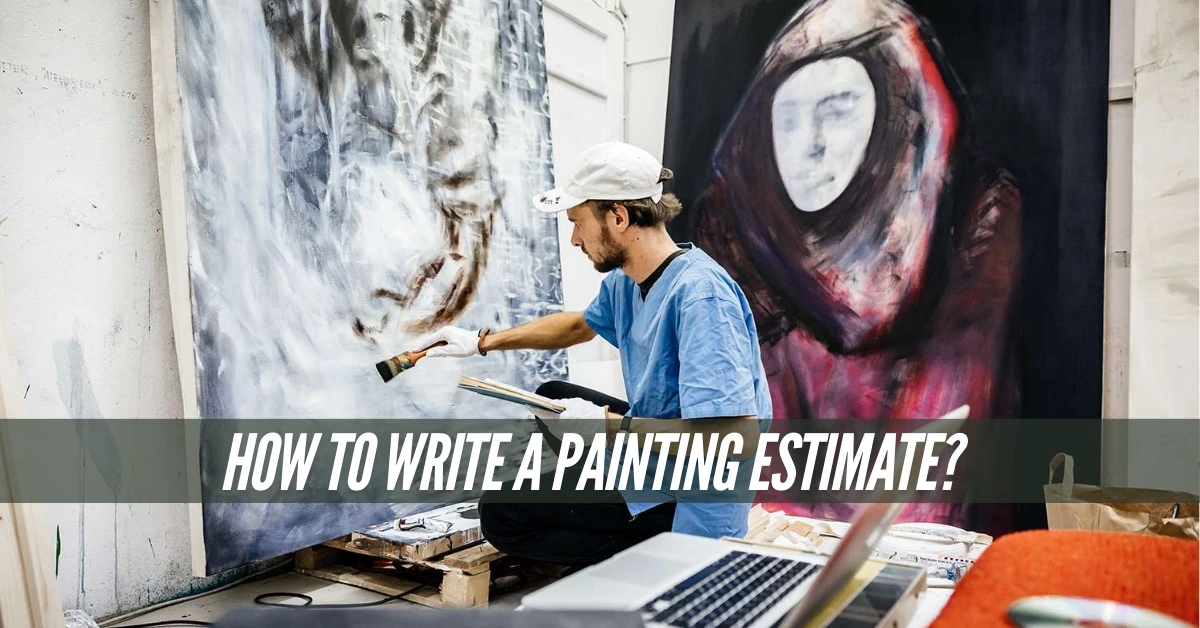How to Write a Painting Estimate?
For any contractor or painter, painting estimation is one of the most significant procedures required for the building process before handing over any painting work to get assurance from clients and achieve successful project results. It particularly relates to the costs as well as the scope of work.
Authentic communication will prevent misunderstandings and protect both parties from possible disputes. It matters whether you redesign the interior or give the exterior a complete makeover, since an accurate estimate of a project’s cost helps form a basis for success. With experts’ help, a contractor can get a comprehensive painting budget to match the client’s expenditures expectations to avoid surprises and, thus, any future dispute.
Project Analysis
To give an excellent painting estimate, you must understand the project’s scope, size, complexity, and challenges that may arise during work. A visit to the site plays a very critical role in this process. During your visit, take into consideration the following :

Preliminary Consultation
Discuss with your client. This can be done personally or over the phone, but knowledge regarding the scope of work is essential. Ask the following questions to get a good view of the job. That includes areas to be painted, surface condition, type of paint, and special considerations.
Size and Complexity
Calculate square feet of area to be painted and the number of different surfaces covered by paint that might incur extra person-hours. For instance, high ceilings, windows, and decorative trim consume more person-hours to paint.
Surface Condition
Rate the surface of its preparedness. Or is it dirty, scraped, sanded, or primed? This also increases labor and material costs.
Special Consideration
Unique items such as wood trim or aesthetic features may include working hard to reach the area or surface requiring more cleaning effort. Also, when scaffolding or ladders are present, this will add to the total bill.
Scope of Work Breakdown
Scope of the project. It describes which work is to be done, which you and your client know, and everything is deemed in a proposal.
Prep work
Good prep work will make your job paint job long-lasting. Add these to your estimate for those prep works:
- Cleaning: Dirt, grease, or old paint needs to be removed from surfaces.
- Sanding/ filling in: The surface is not flat, so this spot needs some smoothing.
- Priming: Primer on raw wood, mold-damaged or stained areas,
Painting
Determine what area of the surface area needs
- Walls: if it is painted throughout the room, specific areas such as:
- Trim Door frames and window sill bases.
- Ceilings: Tray or high ceilings will require more hours and equipment.
- Doors/Windows: You may need further techniques and products to paint doors, windows, or shutters.
Post-Paintwork
After painting, post-painting work leaves the place clean and sparkling with a glass-glazed finish and correct workspace hygiene.
- Touch-ups: the imperfections of the finish may be corrected.
- Cleanup: remover painter’s tape and cleaning brushes to have no paint residue on the floors, the furniture, or the surface
Final Inspection
After completing all the painting and cleanup work, take the client to the site. Let them ensure they are satisfied and observe what needs to be touched up.
Painting Cost Breakdown
This is the breakdown of the overall painting estimation.
Labor Costs
This varies with location and the timeframe of the work, plus the working scale. A professional painter will cost between $30-$70 per hour, depending on experience and location.
The city will charge $75-$100. The labor charge for an average 12×12 room is around $400-$1,200 for hours worked based on the determination to complete the job.
Material Cost
Material costs vary with paint types and the scope of work.
Paint
- Budget Paint: $15-$25/gallon
- Mid-Range Paint: $30-$50/gallon
- Premium Paint: $60-$100/gallon
The average room will use about 2–3 gallons of paint. The paint cost will depend again on the quality you want to use.
Primer and Equipment
A primer may need to be applied to guarantee that the paint bonds to the surface, which can be considerably more critical if surfaces are new or damaged. Primer would cost between $15 and $30 a gallon, but you may require a gallon to 2 gallons, depending on your wall.
Finally, there are Materials and Equipment: brush rolls, painter’s tape drop clothes, and other tools or products.
- Brushes/Rolls-$10-$40
- Tape Painter $5 to $15
- Drop clothes tarps-$10 to $30
- Material Cost: $150–$500, depending on the paint’s quality and the job’s size.
Surface Preparation
Surface preparation is critical in ensuring a professional finish, especially if the inner walls have wall imperfections or outside where paintwork is being done.
- Power washing of exterior: $100-$400. Clean the surface to be painted
- Wall repairs: patching, sanding, caulking to seal cracks, and holes costs will range from $50-$150 per hour
- Preparation estimate costs $50-$200, depending on the surface
Equipment Rental
If work requires doing at heights, special equipment and equipment in the installation can be used by renting ladders, scaffolding, or elevators.
- Ladders: $30-$50 a day
- Scaffolding: $100 to $250 a week. High-rise scaffolding jobs.
- Equipment Rental Budget Estimate: $0-$200 for high ceilings or high-level exterior work.
Additional Cost and Profit Margin
Travel fees are felt in a project in terms of location; the project is located in an extensive area or far from the area of service. Sometimes, they are between overcharges as high as $200 and down to as low as $50. This overcharge depends on the distance and rules of the contracting company.
Include a profit margin. The net profit averages for the trade on painting will be 15 – 25%, depending on the market and you.
Total Estimate Costs
Total cost to paint an average interior room (12 x 12) 2024. There are going to be low-end options and high-end options.
| Cost element | Quantity | Unit | Low-end estimate | High-end estimate |
| labor(flat rate or hourly) | 40 | hours | $400 | $1,200 |
| Material (paint, primer, etc.) | 1 | Set for 12x 12 room | $150 | $500 |
| Surface Preparation | 1 | Set for 12x 12 room | $50 | $200 |
| Tools supplies | 1 | Set for 12x 12 room | $30 | $150 |
| Additional costs | N/A | N/A | $0 | $200 |
| Total estimate | N/A | N/A | $630 | $2.050 |
This cost, however, would proportionally rise with larger projects such as the whole house or massive exterior areas. For instance, interior or exterior painting of a home would be on the scale of $2,000 to $8,000, depending on the materials’ size, complexity, and quality.
Quote the Painting Estimate
Gather all this information to save onto paper:

Header:
- Your business name, content information, and licensed number
- Client’s name and address, Contact details, and Estimate date
Scope of work
- The project description must be well explained, including what to paint, the type of paint, the surface preparation task, extra services, and how many cots.
Labor and Material Cost:
- Material and supplies cost, Labor cost, and Taxable or extra charges
Terms and Conditions:
- Payment Terms: A 50 % deposit is needed before commencing work after completion.
- Expected Date of Completion: It will take 5 days
- Warranty: Warranty is for a year on craftsmanship.
- Exclusions: Major wall repair or Structural damage repair
Signature area
- Leave some space to sign this job estimate to your clients and you on accepting the terms above.
Conclusion
The estimate for the painting jobs will be split to encompass labor, materials, and preparation with supplemental equipment that will be used. This would enable you to give your clients a complete and transparent estimate of what the project will entail, as it will teach the true scope and value of work. This brings clarity and transparency; therefore, it brings a positive experience toward the painting project, increasing confidence levels between you and your clients about this particular task.



